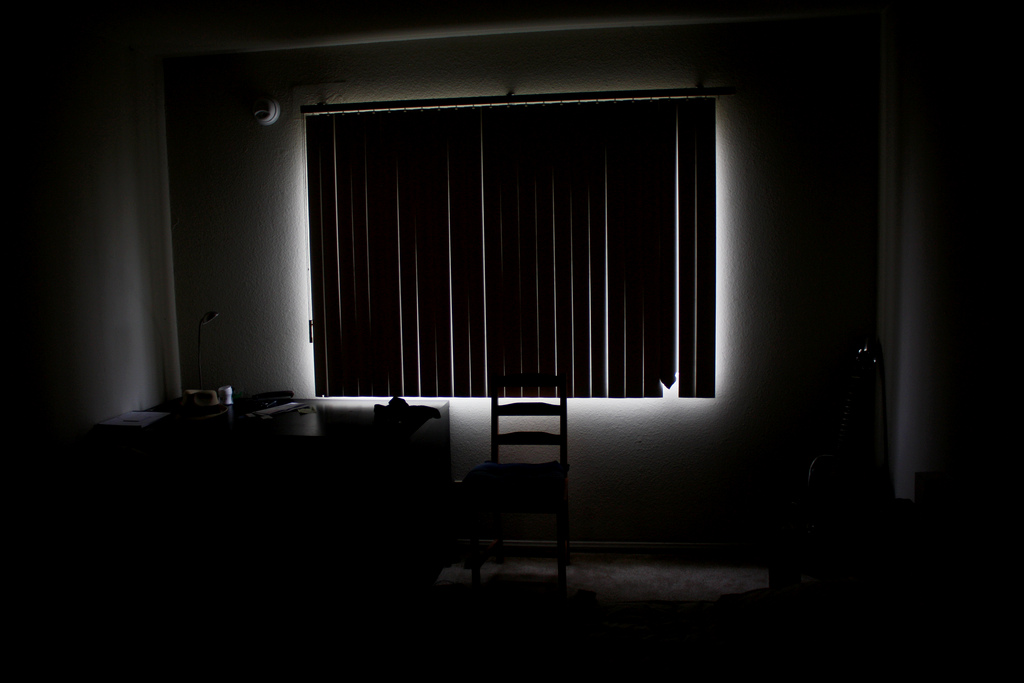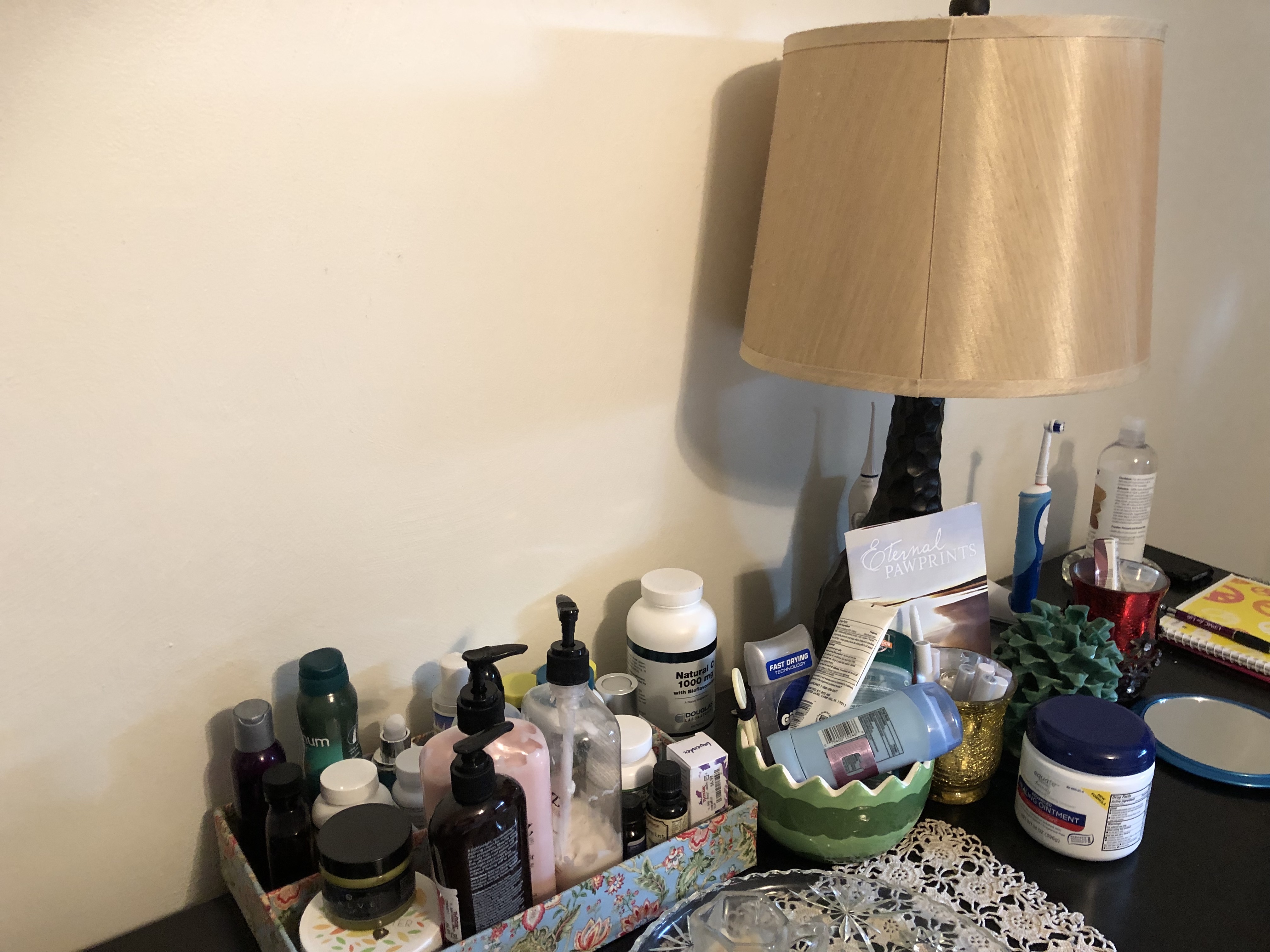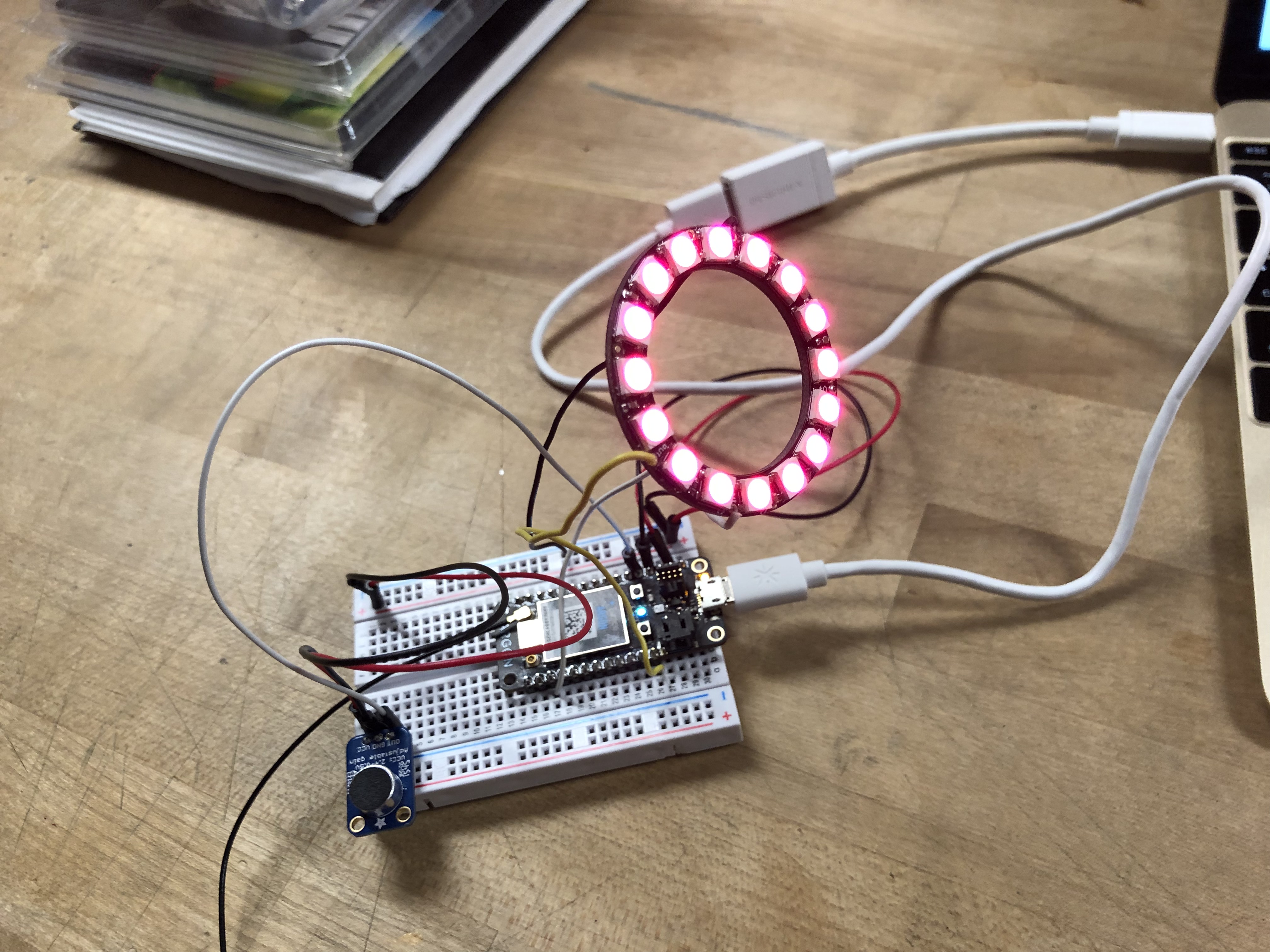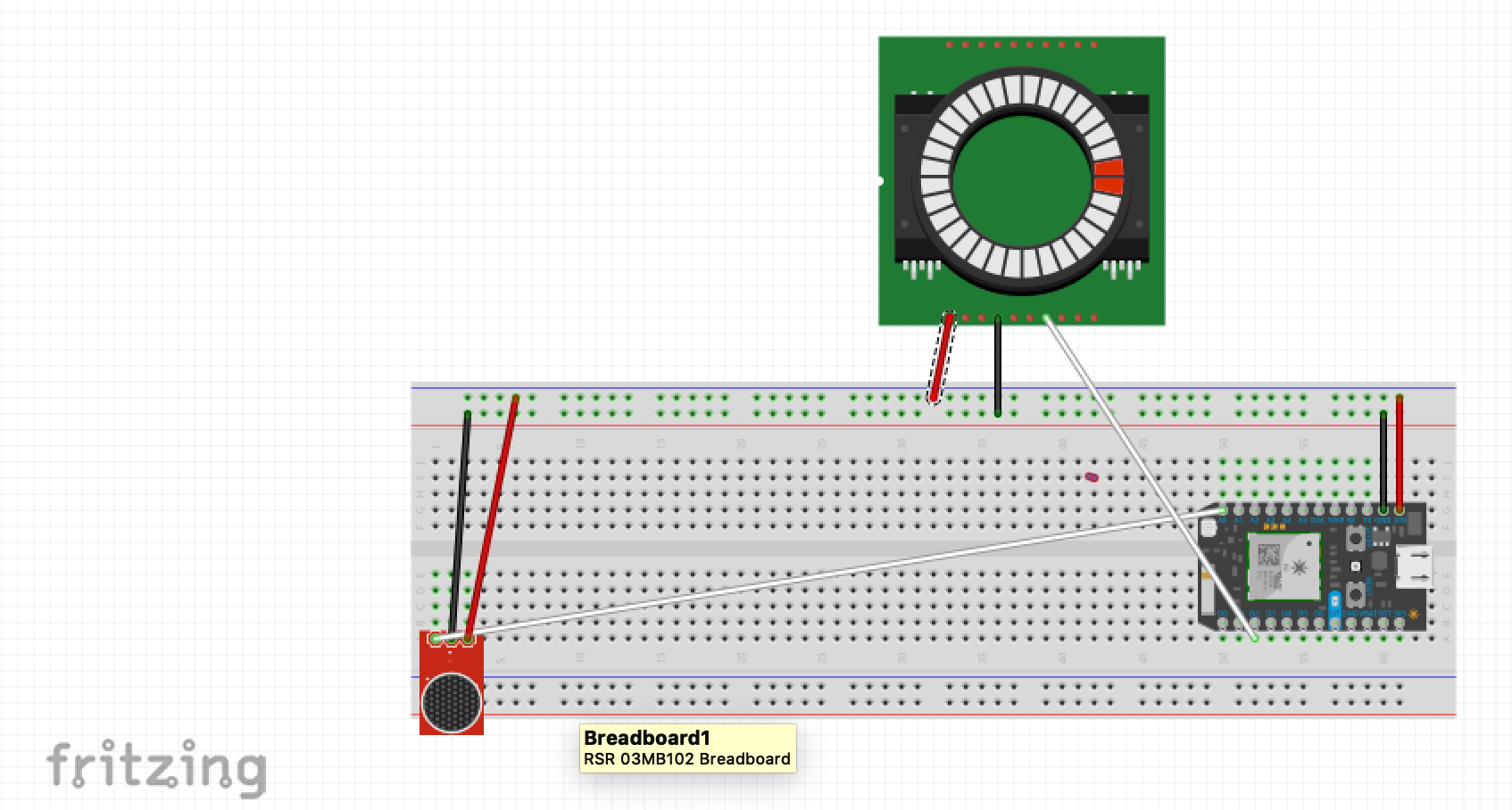Process:
I developed the prototype systemically, using the techniques we learned in class.
1. I sketched out in plain language what I wanted to accomplish with the solution.
2. I researched on adaFruit to find the right components and examples of code.
3. I explored the IoT station and selected a number of options for the sensor and the light.
4. I wired each of the components and coded them separately to make sure that they worked.
5. I built a webhook that would "GET" the temperature for my mother's zip code when called.
6. I integrated the components and their code a step at a time. This is the point at which I entered what I call, the "washing machine".
Despite days of googling and trying different code to effectively use the webhook, the microphone, and the neopixels, they would not work together. Layering a webhook on top of them stretched my meager coding skills to their limit.





